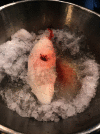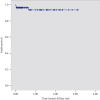Results and Lessons Learned on Robotic Assisted Kidney Transplantation
- PMID: 32934965
- PMCID: PMC7484686
- DOI: 10.1155/2020/8687907
Results and Lessons Learned on Robotic Assisted Kidney Transplantation
Retraction in
-
Retracted: Results and Lessons Learned on Robotic Assisted Kidney Transplantation.Biomed Res Int. 2024 Mar 20;2024:9819685. doi: 10.1155/2024/9819685. eCollection 2024. Biomed Res Int. 2024. PMID: 38550162 Free PMC article.
Abstract
Introduction: Nowadays, minimally invasive surgery in kidney transplantation is a reality thanks to robotic assistance. In this paper, we describe our experience, how we developed the robotic assisted Kidney transplantation (RAKT) technique, and analyze our results. Material and Methods. This is a retrospective study of all RAKTs performed at our center between July 2015 and March 2020. We describe the donor selection, surgical technique, and analyze the surgical results and complications. A comparison between the first 20 cases and the following ones is performed.
Results: During the aforementioned period, 82 living donor RAKTs were performed. The mean age was 47.4 ± 13.4 and 50 (61%) were male. Mean body mass index was 25 ± 4.7 and preemptive in 63.7% of cases. Right kidneys and multiple arteries were seen in 14.6% and 12.2%, respectively. Mean operative and rewarming time was 197 ± 42 and 47 ± 9.6 minutes, respectively. Five cases required conversion to open surgery because of abnormal kidney vascularization. Two patients required embolization for subcapsular and hypogastric artery bleeding without repercussion. Three kidneys were lost, two of them due to acute rejection and one because venous thrombosis. Late complications requiring surgery included one kidney artery stenosis, one ureteral stenosis, two lymphoceles, and three hernia repairs. We noticed a significant reduction in time between the first 20 cases and the following ones from 248.25 ± 38.1 to 189.75 ± 25.3 (p < 0.05). With a mean follow-up time of 1.8 years (SD 1.3), the mean creatinine was 1.52 (SD 0.7) and RAKT graft survival was 98%.
Conclusions: The robotic approach is an attractive, minimally invasive method for kidney transplantation, yielding good results. Further studies are needed to consider it a standard approach.
Copyright © 2020 Mireia Musquera et al.
Conflict of interest statement
The authors declare that there is no conflict of interest regarding the publication of this paper.







